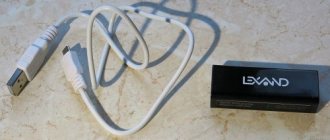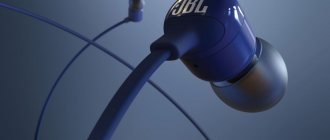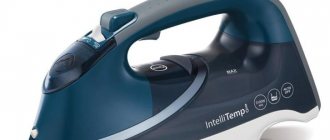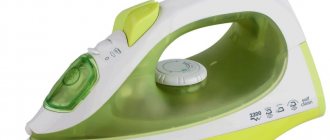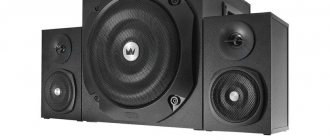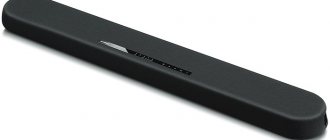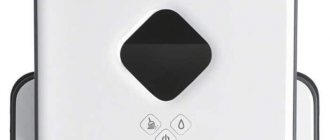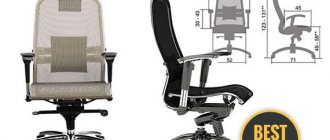camera tripod can be useful not only for professionals.
Even a simple social media avatar can be made better by eliminating the fuzziness that occurs due to natural hand tremors.
In addition, a tripod allows you to take a family or group photo without sacrificing one of the family or team members.
People who are far from photography are ready to go to the store and buy the first tripod they come across, but this is not worth doing: the devices differ in size, installation method, material and other parameters.
Therefore, it is better to familiarize yourself with the variability of this device and make an informed choice.
Rating of the TOP 14 best tripods for cameras
| Place | Model | Price |
| Best Large Tripods | ||
| #1 | HAMA Star-63 (04163) | |
| #2 | HAMA Star-64 (04464) | |
| #3 | HAMA Delta Duo 170 (04098) | |
| #4 | Rekam E-155 | |
| #5 | HAMA Action 165 3D (04095) | |
| #6 | Manfrotto MKCOMPACTLT (Compact Light) | |
| The best monopods | ||
| #1 | Manfrotto MMCOMPACT (Compact Monopod) | |
| #2 | GoPro ASBHM-002 | |
| #3 | FUJIMI FM103 | |
| #4 | Manfrotto MVMXPRO500 | |
| #5 | FUJIMI FM222V | |
| Table tripods | ||
| #1 | HAMA Flex 2in1 (04314) | |
| #2 | Joby GorillaPod 1K Kit | |
| #3 | Joby GorillaPod 3K Kit | |
Page navigation:
Which tripod is better to buy?
The choice of tripod, first of all, should depend on the level of professionalism of the user, his budget, the expected frequency of use and the shooting device. To make the purchasing process easier, you can use general recommendations.
- Sony VCT-AMP1 is the lightest monopod in its category;
- Sirui P-224 stands out for its high-tech case material;
- The Manfrotto 685B is ideal for field use;
- Fujimi FM107 – a universal monopod at an affordable price;
- Hama Star-63 (04163) has everything for careful balancing;
- Rekam E-125 – tripod with the longest warranty;
- Continent TR-F10 – amateur-grade tabletop tripod;
- Benro A550FBH1 is the most multifunctional device in the rating;
- Xiaomi Mi Bluetooth Selfie Stick is convenient for remote shooting from a smartphone
- Harper RSB-304 has the ability to configure without direct contact with the phone.
To avoid mistakes, you should be especially careful when comparing the accessory to your equipment. The best solution would be to try it on in a store and do a short test drive.
Types of tripods and their features
Important! There are several types of tripod designs that determine the features and scope of the “stand”.
- Monopods. Simple, reliable, mobile, designed mainly for shooting dynamic events (for example, sports competitions). They are inexpensive and allow you to quickly place the camera in the desired position, but do not provide full stabilization of the camera.
- Tripods. They consist of 3 legs, respectively, have 3 points of support and provide more reliable stabilization of the camera. They are quite heavy and large, but are perfect for cases where you need to shoot for a long time while holding the camera in the same position.
- Tabletop compact tripods. Devices whose name speaks for itself. These are miniature and lightweight tripods for placing on any flat surface (for example, on a table or windowsill) and then placing cameras on them.
- Tripod-clothespin. It has a flexible base and is therefore suitable for compact cameras and smartphones. The clamp is made in the form of a spring clip, which securely holds the device between the mounts and allows you to take both classic and selfie shots. Between the clothespin and the place for fixing there may be an extension rod, a hinged or flexible (elastic) base. Depending on this, you can take photographs at different distances from the object and at different angles. This type of tripod is suitable for creating content using a selfie camera, for example, for beauty bloggers.
- Clamp stands. They are fixed in a horizontal view almost motionlessly using special clamps and allow you to create clear photographs with ideal boundaries of objects. If the model is equipped with a rotating lock, pictures can be in both portrait and landscape orientation.
Types of tripods
To choose a tripod for your camera, you need to know what categories they are divided into:
- Pocket. Designed for small and lightweight cameras (budget DSLRs and point-and-shoot cameras). They are usually placed on tables, chairs and surfaces where a particularly large height is not required. Such tripods are small in size and can easily fit in the inside pocket of a jacket or bag. Usually their height does not exceed 20–30 cm, and their weight is 150–200 grams. Pocket tripods have sliding or flexible legs (the latter are more preferable, since they can be attached to a fence or tree). The maximum permissible load on them should not exceed 1 kg, that is, this is approximately the weight of an entry-level SLR camera with a small lens. Pocket tripods are not intended for serious photography, as they simply cannot support the impressive weight of a professional camera and lens. Typically, such tripods are used for macro photography.
- Tripod (tripod). The most common type of tripod used by photographers. It has three legs, hence the name. It features a reinforced design and is made of plastic, carbon or aluminum. Depending on the material and the number of bells and whistles, its price is determined. The tripod can withstand a load of 3 to 10 kg, and its height ranges from 140 to 190 cm. When folded, the length of the tripod is 50–70 cm. Weight is 1.5–2.5 kg. Such tripods are adapted to any type of camera, regardless of its contents and type. The cost of a tripod for amateurs is $30–60, while professional models start at $80. Tripods can use a regular or detachable head.
- Monopod. They have only one leg, hence its name. Designed to reduce stress on your hands when taking photographs. Typically used for reporting and group shots. Not intended for long exposure photography.
What parameters should you pay attention to when choosing?
When choosing a tripod for a camera, first of all you should take into account the type of design discussed above.
Note! Once the choice of tripod type has been made, you need to pay attention to other characteristics:
- Weight and dimensions. For photographers working in a studio, they are not so important, but for travel photographers or bloggers they are perhaps the key parameters. Lightweight and compact tripods are transportable and suitable for travel.
- Material. The material of the tripod determines its main characteristics. Thus, carbon tripods are lightweight and dampen vibrations, while aluminum models are heavier and more stable. When it comes to plastic, it is important that the main elements (for example, the tilt adjustment screws or camera clamp) are made of high-quality material, such as chrome or steel.
- The number of “legs” of a tripod , which are also fulcrum points and determine the reliability and stability of the camera.
- The diameter of the legs and the working height range of the tripod. For some photographers, for example, it is important that the tripod can be extended for full-length shooting.
- The quality of the attachments on the legs (spikes or rubber tips).
- The method of adjusting the clamp is the head to which the camera is attached. There is ball regulation, 2D and 3D. The first type allows you to quickly and accurately adjust the position of the camera. The second - in the horizontal and vertical planes, the third - horizontally, vertically and to the side.
Best Large Tripods
Large tripods can be useful in both studio and street photography, as well as when recording reports.
Rating of the best tripods for large cameras based on customer reviews and ratings.
HAMA Star-63 (04163)
Height adjustable floor tripod from 66 to 166 cm with 3D adjustable head.
The model is designed for photo and video recording equipment weighing up to 4 kg.
It has a built-in head that is adjustable horizontally and vertically and tilts sideways, rests on 3 legs and has rubber support tips.
The tripod is made of aluminum and is characterized by ease of assembly and high quality materials.
Specifications:
- height: 66-166 cm;
- Max. load: 4 kg;
- weight: 1.74 kg;
- number of legs: 3;
- rod diameter: 26.7 mm.
Advantages
- price;
- quality of materials;
- head adjustable in all planes;
- case included;
- sustainability.
Flaws
- no phone attachment;
- long handle;
- tight adjustment.
HAMA Star-64 (04464)
Two-tone stable tripod with 3-axis head, bag hook and built-in level.
A reliable device made of aluminum alloy, designed for fixing equipment weighing up to 4 kg.
The tripod is easy to install on almost any surface, securely fixed and quickly adjusted thanks to the adjustable head.
The kit includes a replacement pad. The screw size for the tripod socket is 1.4 inches.
Specifications:
- height: 69-185 cm;
- Max. load: 4 kg;
- weight: 1.66 kg;
- number of legs: 3;
- rod diameter: 26.7 mm.
Advantages
- build quality;
- ease of installation;
- camera lift height range;
- light weight;
- design.
Flaws
- plastic support locks;
- unstable (especially during wind);
- poor head mobility.
HAMA Delta Duo 170 (04098)
Stable, reliable tripod with a height of 62 to 170 cm, a built-in level and a maximum load of 4 kg.
The aluminum alloy floor tripod is suitable for fixing photo and video cameras weighing up to 4 kg.
A distinctive feature of the model is the versatility of its legs, due to which it can be placed on any surface.
The device has a built-in level and an adjustable 3D head.
Specifications:
- height: 62-170 cm;
- Max. load: 4 kg;
- weight: 1.85 kg;
- number of legs: 3;
- rod diameter: 26 mm.
Advantages
- different types of tips included;
- convenient case;
- build quality;
- height adjustment range.
Flaws
- unreliable fixation of the device;
- heavy;
- cannot be used as a monopod.
Rekam E-155
A lightweight and inexpensive tripod for beginner photographers with a shooting height of up to 155 cm and a small (59 cm) folded height.
The compact device for installation on the floor has three stable legs and rubber tips included.
Height adjustment ranges from 56.5 to 155 cm, and the head is 3D adjustable.
The model is equipped with a bag hook, a built-in level and a lifting mechanism. Replacement pad and storage case included.
Specifications:
- height: 56.5-155 cm;
- Max. load: 4 kg;
- weight: 1.19 kg;
- number of legs: 3;
- folded length: 59 cm.
Advantages
- good altitude range;
- light weight;
- case included;
- built-in level;
- High quality camera clamps.
Flaws
- unstable;
- when folded, it takes up a lot of space;
- tight head movement.
HAMA Action 165 3D (04095)
Aluminum 3D tripod with spiked legs and rubber tips included at an affordable price.
The black floor tripod has a solid appearance and reliable aluminum rods, as well as fasteners made of high-quality plastic.
Height adjustment is possible in the range from 61 to 165 cm. The maximum load is 4 kg.
The kit includes a 3D head, a replacement pad and a case.
Specifications:
- height: 61-165 cm;
- Max. load: 4 kg;
- weight: 1.32 kg;
- number of legs: 3;
- rod diameter: 23 mm.
Advantages
- metal base;
- ease of use;
- camera fixation strength;
- price;
- smooth adjustment of the head.
Flaws
- build quality;
- there is some play in parts;
- no phone attachment.
Manfrotto MKCOMPACTLT (Compact Light)
Laconic, durable and lightweight tripod with a ball head in two colors.
The miniature tripod weighs less than 1 kg and comes in red and black colors and comes in a convenient case for storage and carrying.
Some elements are made of impact-resistant plastic, and the main parts are made of aluminum.
The system of rapid movement of the central rod and the ball head allow you to precisely adjust the camera for shooting at the maximum possible proximity to the object (including macro photography).
Specifications:
- height: 39-131 cm;
- Max. shooting height: 103 cm;
- Max. load: 1.5 kg;
- weight: 0.92 kg;
- number of legs: 3.
Advantages
- compact;
- easy;
- quickly folds and unfolds;
- entirely made of aluminum;
- possibility of turning over the central rod.
Flaws
- plastic tips of supports;
- no removable platform;
- The maximum shooting height is only 103 cm.
How to choose a tripod and monopod
At the dawn of the development of photographic equipment, it was possible to photograph only stationary objects, since the shutter speed was measured in tens of minutes. A photographer of those times simply could not do without a tripod, which is now “in German” called a tripod.
So, the main and original function of a tripod is to improve the quality of photography, which manifests itself at more or less long shutter speeds.
The second function is to hold the camera in a certain position for ease of shooting, as well as change the nature of its movement.
In addition to tripods, there are so-called monopods - tripods with one leg, characterized by increased mobility. Most often, they are used to support heavy lenses and video shooting.
Tripods
When choosing a tripod, first of all, you need to decide on its size. The following varieties can be distinguished:
- Pocket and tabletop tripods.
Perhaps the most diverse class. Here are present:
- ultra-budget models designed for compact cameras
- tripods with flexible legs that can be attached to anything
- smaller versions of conventional tripods
- original designs
Tripod Falcon Eyes S-021
Polaroid Flexible Tripod
Falcon Eyes MT-0024 tripod
Falcon Eyes MT-0011 tripod
- Lightweight tripods (travel tripods). They are intended, as you can understand, to carry them with you for a long time. As a rule, they are distinguished by their short folded length and light weight.
- Heavy tripods. Best suited for studio use. They have great weight and extremely durable construction.
Tripod Manfrotto BeFree MKBFRA4-BH
Tripod Manfrotto 475B
Of course, pocket and tabletop tripods are a very specific category, but all large tripods have a number of features by which they can be selected. Let's list them:
Head type and tripod purpose
A camera mounted on a tripod must move. Accordingly, the top part of the tripod, called the head, is capable of rotation in various directions. Tripod heads can be of three types:
- Ball. The ball joint here is capable of turning and tilting in any direction.
- 3D heads. Separate hinges for each axis of rotation, with separate clamps of one type or another for each of the hinges.
- Heads for video shooting.
They feature smooth rotation and tilt, but without the ability to rotate the camera to a portrait position. They have a long handle for better turning control. The design of a good video head may include a mechanism called counterbalance, which prevents the camera from tilting spontaneously and returns it to its normal position. Also, such heads have the ability to adjust the rotation force for maximum smoothness in a specific shooting situation. - Panoramic heads. As you can understand, they are intended for panoramic photography, when one is “stitched” from several photographs obtained by moving the head.
Manfrotto MHXPRO-BHQ6 tripod head
Tripod head Benro HD-38
Such heads are good for the most accurate camera positioning. There are also heads with a gear mechanism that allow you to adjust the tilt and rotation even more precisely, literally by degrees.
Manfrotto MVH500A tripod head
Panoramic tripod head Sirui PB-10
In addition to the purpose of the head, the method of attaching the camera to the tripod is important.
Cameras and video cameras have a hole with a special thread at the bottom, and the tripod has a screw that fits into this hole.
Typically, the head has a removable platform that is attached to the camera and then mounted on a tripod.
Sirui G-20KX tripod head
Some tripods do not have a removable platform - this is inconvenient and is a budget solution.
Manfrotto Compact Light Tripod Head
The sites themselves can:
- fixed to the tripod
- move in the grooves. This is convenient for macro photography: you can focus by moving the camera.
- have an original design
Kingjoy KH-6500 tripod head
Manfrotto 468MGRC3 tripod head
Manfrotto Compact Action Tripod
Tripod design
Let's move directly to the “lower” part of the tripod. Here we can highlight the following features that affect operation.
- Number of sections. The more sections a tripod has that make up its legs, the less length it takes when folded. But the downside of a large number of sections is an increase in cost and a decrease in the reliability and stability of the tripod.
- Method of fixing sections. The main options here are latch and rotary coupling. Latches require better workmanship, so they are relevant on expensive models.
- Possibility of turning legs in the opposite direction. This is in demand on compact models, as it allows you to further reduce the length when folded.
- Availability of additional spacers. Additional spacers are used on budget models and video tripods, increasing the rigidity of the structure.
- Possibility of turning over, tilting the central rod. This functionality can be useful when shooting objects located below the top of the tripod, such as on the ground.
- The presence of a shortened central column. Allows you to install the camera a few centimeters from the floor, subject to the possibility of turning your legs at a large angle.
- Hook on the central column. Allows you to hang additional weight or bag to stabilize the tripod.
- Spikes at the ends of the legs. Allows you to mount your tripod more securely on soft surfaces. For smooth floors, rubber-coated tips are best.
Fixing the tripod legs with latches
Fixing the tripod legs on the rotary couplings
Rotating the tripod legs in the opposite direction
Tripod with additional spacers between the legs and the central column
Tripod with central column that rotates 90 degrees
Shortened central column at the tripod
Tripod with hook on central column
Spikes and rubber tips on tripod legs
Tripod materials
Despite their fundamental simplicity, tripods come in a wide variety; the price difference between expensive and budget models is more than ten times. And, of course, first of all it depends on the materials and quality of the tripod.
The tripod design has a tubular base, and the tubes themselves can be made of metal (aluminium-based alloys) or carbon. The main advantages of carbon are lower weight and greater rigidity than metal. Let us remember that rigidity has a strong influence on image quality and ease of use.
Carbon fiber texture on tripod legs
The rest of the tripod can consist of plastic (a lightweight, budget option) or metal.
Tripod materials will affect two important qualities of the tripod:
- The maximum weight of the camera that the tripod can support. This characteristic is directly indicated in the product characteristics.
- Tripod stability against bending and vibrations. This is why you actually buy a tripod. In general, it is enough that the tripod is completely metal and without any play in the connections.
Tripod dimensions
Naturally, it is not profitable for manufacturers to develop tripods from scratch every time. Therefore, a whole line of models differing in size but similar in design is produced.
As an example, we can cite the universal series from Benro:
Benro tripods
Here are the characteristics of the lightest and heaviest tripod in this series:
| Model | Number of sections | Max. height | Folded length | Tripod weight | Maximum load |
| A200FBH00 | 3 | 1315 mm | 540 mm | 1070 g | 2500 g |
| A650FKB2 | 4 | 1714 mm | 649 mm | 2300 g | 8000 g |
Monopods
Monopods, despite their greater simplicity, appeared later than tripods. Almost everything that has been said about tripods applies to monopods. They can have a replaceable head, different sizes, number of sections, and so on.
Manfrotto 694CX monopod
Monopods for photography can, in principle, be used without a head: in this case, the monopod will tilt along with the camera.
Monopods for video shooting
Monopods for video shooting have their own characteristics:
- A video head similar to those used on tripods.
- Three “legs” at the lower end of the monopod, giving the structure a more stable position.
Monopod Manfrotto MVM500A
Monopods for videography can be used to move the camera while recording video, unlike tripods, which only allow you to change the direction of shooting. And camera movement is, as you know, one of the artistic techniques in video filming.
conclusions
As we can see, despite their apparent simplicity, tripods can have features that can greatly help with any type of shooting. In addition, they are not subject to moral and physical obsolescence, so if you are into photography, you are unlikely to regret spending money on a tripod.
And our article will help you choose what is right for you.
The best monopods
Monopods are no less stable than tripods, but they take up much less space both when disassembled and folded.
Manfrotto MMCOMPACT (Compact Monopod)
Lightweight, compact, budget monopod in four colors, weighing only 330 g.
A portable monopod with a working height from 39 to 145.5 cm is designed for shooting with cameras whose weight does not exceed 1.5 kg.
The model has an ergonomic handle made of high-quality material that is pleasant to the touch and a universal 1.4-inch mount.
The kit includes a wrist strap for easy operation of the device.
Specifications:
- height: 39-145.5 cm;
- assembled length: 39 cm;
- weight: 0.33 kg;
- number of boom sections: 5;
- Max. load: 1.5 kg.
Advantages
- compact;
- easy;
- quality materials;
- ease of assembly;
- price.
Flaws
- flimsy assembly;
- camera weight is limited to 1.5 kg;
- maximum height is only 145.5 cm.
GoPro ASBHM-002
Telescopic monopod-tripod for GoPro video cameras with a convenient design, light weight and excellent stability.
The monopod with a telescopic design has an unusual shape and compact dimensions, but is very stable and allows you to shoot high-quality videos even in windy weather.
When folded, the model is only 23 cm long, but unfolds to 56 cm.
The magnetic mount allows you to quickly turn your monopod into a tripod, making it a 2-in-1 device.
Specifications:
- height: 23-56 cm;
- assembled length: 23 cm;
- material: plastic;
- Compatible camera models: GoPro, GoPro MAX.
Advantages
- compact;
- very stable;
- adapter-platform included;
- spectacular design;
- head included.
Flaws
- Only suitable for GoPro brand cameras;
- price;
- completely plastic.
FUJIMI FM103
Inexpensive floor-standing monopod made of aluminum with a maximum load of 5 kg.
The monopod is made of aluminum alloy and has a robust design that can support devices weighing up to 5 kg.
The maximum working height is 55 cm, with a central rod - 171.5 cm.
The model has a screw for a tripod socket with a diameter of 1.4 inches and a rod consisting of 4 sections.
Specifications:
- height: 55-171.5 cm;
- assembled length: 55 cm;
- Max. load: 5 kg;
- weight: 0.36 kg;
- rod diameter: 26.8 mm.
Advantages
- easy;
- wide range of height adjustment;
- price;
- compactness;
- case included.
Flaws
- no head included;
- there is no protective cover on the landing pad;
- no level.
Manfrotto MVMXPRO500
Premium monopod for video shooting with a maximum load of up to 5 kg.
The floor-standing device for videographers has a robust design: the main parts are made of aluminum, and most of the body is made of high-quality plastic.
The kit includes a replaceable head with up, down and 360 degree swivel angles.
The device itself weighs 2.8 kg and has a length of 77 cm.
Specifications:
- height: 20.5-77 cm;
- assembled length: 77 cm;
- Max. load: 5 kg;
- weight: 2.8 kg;
- rod diameter: 35.4 mm.
Advantages
- build quality;
- pleasant to the touch plastic;
- mobility;
- suitable for video cameras up to 5 kg;
- Replacement pad included.
Flaws
- price;
- heavy weight;
- inconvenient location of the adjusting screw.
FUJIMI FM222V
Video monopod with adjustable head, built-in level and maximum height of 147 cm.
Stable aluminum monopod with 3-point support.
Designed to install video cameras weighing up to 4.5 kg, and it is very lightweight: it weighs 1 kg and has an assembled length of 58 cm.
The base can be used as a tripod.
The camera mount size is 1.4 inches.
Specifications:
- height: 58-147 cm;
- Max. load: 4.5 kg;
- weight: 1 kg;
- rod diameter: 26 mm.
Advantages
- light weight;
- made of aluminum;
- there is a built-in level;
- replacement pad included;
- supports cameras up to 4.5 kg.
Flaws
- rubber backing on the shoe;
- shallow level;
- price.
Tripod selection
So, if you, having considered all the advantages and disadvantages, have decided that you can’t live without a tripod, then you need to decide which of the many options to choose for yourself. It should be remembered here that the choice is individual for each photographer, and the choice described below concerns exclusively me. Of course, all variations of instruments familiar to me will be described, and I will personally try to justify my choice.
Tripods, as a rule, consist of several elements. Most of them include:
- tripod head;
- central rod;
- legs;
- leg stops.
Very rarely do you come across options without the first element, thereby inviting the buyer to choose the copy he needs, but more often everything comes already assembled.
Tripod head
The tripod head is the most important element of the selected tool. It determines how the camera will be mounted, which plays a decisive role. There are 4 main types of heads:
- ball;
- joystick;
- biaxial;
- triaxial.
My choice fell on the first one, namely the ball one. In my opinion, it fixes the camera most firmly, and it is very convenient to adjust it.
You should also pay attention to the type of camera attachment to the head and the maximum weight that this installation can withstand. In the case of weight, it should be approximately 2, or preferably 3 times, the mass of your camera.
For what? So that in the future, if you decide to change your camera or optics, you won’t have to change your tripod. For example, so that you can install in place of the Canon 1100D another brand device of a higher level, such as the Canon 70D, or maybe the Canon 5D Mark II, which is certainly heavier.
What is it about the type of fastening?
In most cases, statically mounted instruments are available on the market. This means that the camera needs to be “screwed” to a special connector. There are “clasp” fasteners that allow you to quickly remove and install the device, but they are very unreliable: the fastening levers often break (it all depends on the quality of the tripod).
The most versatile option is a two-part platform. One always remains on the support, the other on the camera. This allows you to quickly remove our device from a tripod when necessary.
Central rod
Such an element can be removable or not, it all depends on the tripod. Ergonomics, in turn, depends on this. It's no secret that with it our instrument will be somewhat heavier and larger. However, it also has some features for which you can love it, but first things first.
So, when you lift the camera up, the central rod allows you to fix it at a comfortable height for shooting. This eliminates the need to bend over to look through the viewfinder. You can also mount it horizontally, which allows you to move the camera, thereby changing the composition, without changing the position of the tripod.
The main disadvantages of the design can be called a small backlash (for most the backlash is unbearably critical) and the inability to install the tool at the lowest possible position. Of course, you can use it in the studio, but for shooting outdoors it is better to abandon the boom.
In my opinion, it’s better to take it with a barbell. Moreover, today, on high-quality tripods, the rod comes included by default.
Tripod legs
There are several types of legs:
- plastic;
- aluminum;
- metal;
- carbon fiber.
The latter are famous for their greatest strength and lightness, which is why they are so in demand among travelers. Aluminum and metal legs add more weight to the entire structure, but often provide greater stability. Plastic ones are not so durable, and besides, they are usually attached to the central rod. I don't recommend taking plastic ones.
You should also consider the number of sections in the legs. The more of them, the higher the tripod can rise, so the choice between two and three-section models is made with a reservation about the height. Travelers usually choose options with three or more sections, as they are more versatile and easy to transport.
There are also more than three sections that are very convenient and compact when folded; they are worth a closer look.
Leg stops
The last elements to pay attention to are the stops at the ends of the legs and the clamps between the sections. There are versions:
- with pointed stops;
- rubber;
- combined.
The former are used to work with more or less soft ground, the latter are an element of studio photography, and the latter allow you to do everything at once. Therefore, my choice fell on the last option.
When it comes to leg clamps, this is what you should choose. Whatever is convenient for you personally. For me, eccentric clamps turned out to be the most correct option. They allow you to quickly assemble and disassemble the tripod. The second possible option is coupling fasteners. It is more reliable, and some may find it more convenient, so the final choice is yours.
Finally, I didn’t want to pass by, and recommend to you the very chic and competent course “My First MIRROR”. This video course has already helped many novice photographers who had little understanding of their SLR cameras and only took photographs in “Auto” mode. After watching, they realized the beauty of a DSLR camera and began to produce good photographic results. Why do I know this? Because these are my friends to whom I recommended this course.
My first SLR is for CANON camera enthusiasts.
Digital SLR for a beginner 2.0 - for adherents of the NIKON camera.
My friend bought himself a tripod - BENRO IT25 Pro , bought it on Aliexpress, here is a link to the tripod, if anyone is interested. The tripod is very good. This one, for example, in M.Video costs several times more. Another plus is that you can assemble a monopod from it. It turns out 2 in 1! Very profitable! Plus, the kit includes a ball head, which is absolutely a miracle. And one more feature that inspires confidence: the manufacturer provides a 6-year warranty.
Here's what it looks like:
There is also an option BENRO IT15 . It's a little cheaper in price. You can buy it from a verified store on Aliexpress here.
How does it differ BENRO IT15 and BENRO IT25:
- Slight difference in price;
- Permissible load 4 kg, instead of 6 kg, like IT25;
- The maximum extended length is 1475 mm, for IT25 it is 1545;
- Weight 1260 grams, instead of 1610 grams.
Table tripods
Tabletop tripods are compact and portable, well suited for panoramic shooting , for example, from a window, but they have a low shooting height.
HAMA Flex 2in1 (04314)
Lightweight, versatile aluminum tripod with bendable legs and adjustable shooting height.
The model is suitable for various photo and video recording devices and has a shooting height from 10 to 26 cm.
The device is transportable due to its light weight and compactness, so it is well suited for travelers and bloggers.
The kit includes a replacement head.
Specifications:
- height: 10-26 cm;
- weight: 145 g;
- number of rod sections: 1;
- material: aluminum alloy.
Advantages
- light weight;
- price;
- bendable legs;
- replaceable two-axis head included;
- Can be attached to various bases.
Flaws
- quality of the platform for mounting the device;
- main elements made of plastic;
- The head is adjustable in two directions.
Joby GorillaPod 1K Kit
Reliable tabletop tripod with replaceable ball head and maximum load up to 1 kg.
The model is made of steel, plastic and aluminum, has flexible legs and can support devices up to 1 kg.
The maximum working height is 26.5 cm. The tripod is very light, compact and easy to transport.
The kit includes a tripod ball head.
Specifications:
- Max. load: 1 kg;
- Max. working height: 26.5 cm;
- weight: 200 g;
- folded length: 26 cm.
Advantages
- light weight;
- price;
- bendable legs;
- replaceable two-axis head included;
- Suitable for shooting in vertical format.
Flaws
- price;
- can withstand a maximum of 1 kg;
- legs bend tightly.
Joby GorillaPod 3K Kit
Reliable tabletop fixture with adjustable ball head and load capacity up to 3 kg.
The original desktop device, made of aluminum and plastic, is a reliable tripod designed for mounting photo and video equipment weighing up to 3 kg.
The model has a laconic black body, flexible legs, height adjustment, stable rubber tips on the legs, a tripod head and a replaceable pad included.
Specifications:
- Max. load: 3 kg;
- height: 6-24 cm;
- weight: 390 g;
- assembled length: 30.5 cm;
- material: aluminum alloy, plastic.
Advantages
- build quality;
- adjustable working height;
- flexible legs;
- replacement pad included;
- built-in level.
Flaws
- price;
- quick-release mechanism (heavy gadgets may fall out);
- tight mechanism for bending the legs.
conclusions
When buying a camera tripod, you need to know several main features of this device.
- The key parameter when choosing is the design of the device : it can take the form of a tripod, monopod, clothespin, etc.
- For shooting outdoors or in extreme conditions, it is better to choose an aluminum model. It is heavy and will allow the tripod to stand even in windy conditions.
- Be sure to check all adjusting screws, heads and mechanisms. There should be no play, creaking or feeling of a flimsy structure.
